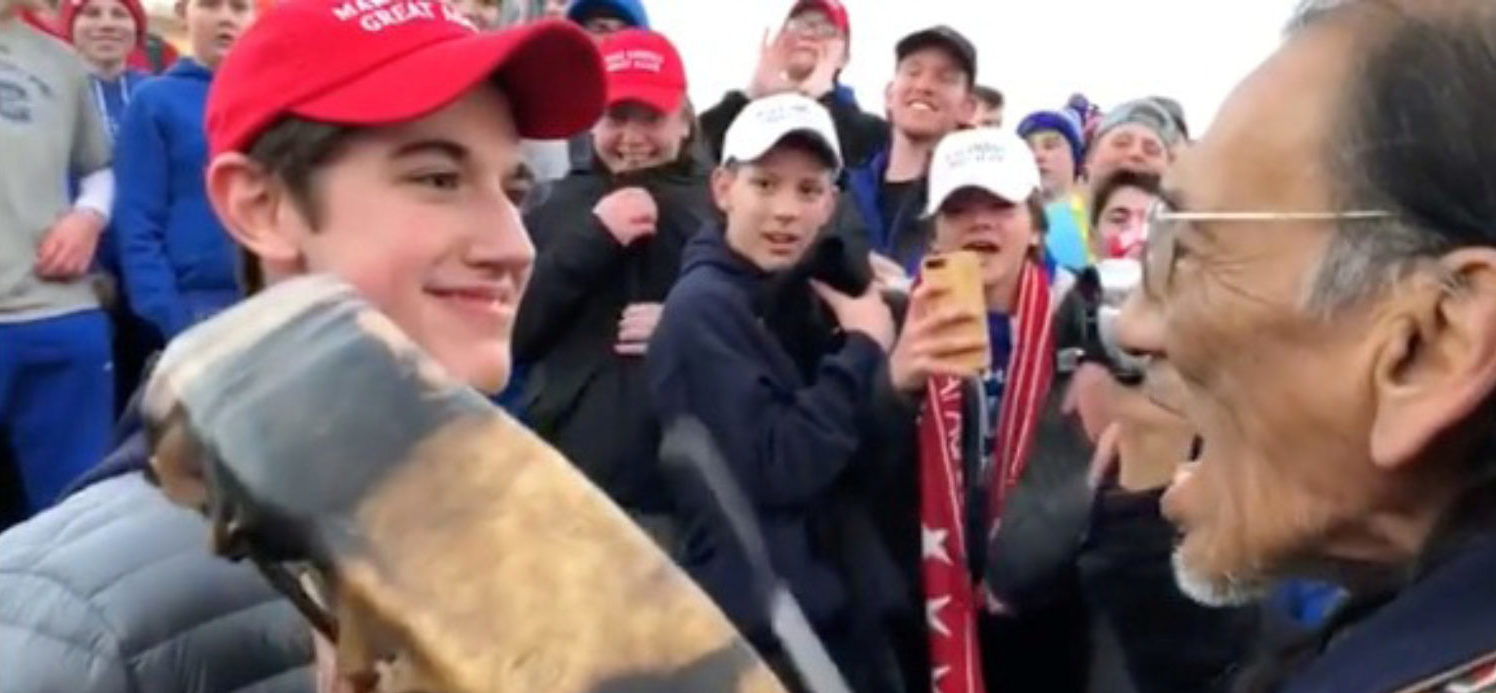Actress Patricia Heaton tore into the media after multiple videos and reports contradicted a story — implicating a group of Catholic high school boys in a supposedly racist incident — that had already gone viral.
The boys were students at Covington Catholic High School in Kentucky, and they were standing on the steps at the Lincoln Memorial waiting for the bus that would take them home from Friday’s March for Life in Washington, D.C.

A student from Covington Catholic High School stands in front of Native American Vietnam veteran Nathan Phillips in Washington, U.S., in this still image from a January 18, 2019 video by Kaya Taitano. Kaya Taitano/Social Media/via REUTERS
In the viral video, the boys were seen laughing and chanting around a small group of Native American protesters led by activist and Elder Nathan Phillips — and the incident was characterized as a racially-motivated attack on Phillips and his companions.
But longer videos released in the hours that followed — along with testimony from students who were present — suggested that the original narrative was not accurate. As the story changed, apologies from people who had “jumped the gun” began to pour in. (RELATED: MAGA hat Kid Speaks Up: ‘It Was Clear To Me That He Had Singled Me Out)
Heaton took to Twitter on Monday to point out that while the apologies were certainly both welcome and warranted, the damage was already done.
1. I’m seeing what I believe to be sincere apologies from some journalists and verified media persons regarding their lack of professionalism in rushing to judgement re the #CovingtonCatholic situation.
— Patricia Heaton (@PatriciaHeaton) January 21, 2019
2. These apologies are welcome and necessary, but they don’t address the damage that cannot be undone which was inflicted upon young people who are about to embark on adulthood – applying to colleges, looking for employment, etc.
— Patricia Heaton (@PatriciaHeaton) January 21, 2019
Heaton noted that not only would the stigma that has already attached to these boys would impact not just those who were present but anyone who attends the school now and in the future.
3. These young people will forever have these smears follow them through their life every time they proffer their resume with the word “Covington” on it. It will also affect anyone who ever has or ever will attend that school. The damage is incalculable.
— Patricia Heaton (@PatriciaHeaton) January 21, 2019
She also pointed out the fact that few — if any — of “those who perpetrated this destruction” would face any repercussions for doing so.
4. And yet those who perpetrated this destruction, no matter how unintended, are still at their jobs, with nary a consequence for their reckless behavior.
— Patricia Heaton (@PatriciaHeaton) January 21, 2019
Heaton went on to suggest that those who had helped to promote the false narrative should face some kind of consequence — and a lack of consequence made their apologies effectively “empty.”
5. It seems to me that an apology without some kind of accompanying action which speaks to the seriousness of their transgression – a suspension from work, some loss of pay – renders any apology empty.
— Patricia Heaton (@PatriciaHeaton) January 21, 2019
6. Some kind of compensatory action would go a long way in signaling their recognition of the seriousness of their transgression and help to restore what’s left of the public’s very fragile trust in their reputations as trustworthy journalists.
— Patricia Heaton (@PatriciaHeaton) January 21, 2019
Heaton’s conclusion: it’s not likely.
However, I don’t believe this will happen.
— Patricia Heaton (@PatriciaHeaton) January 21, 2019
Despite the evidence to the contrary, a number of people have continued to push the narrative that painted the Covington students as racists.


